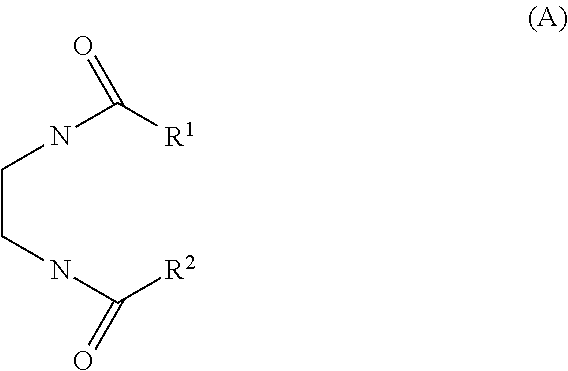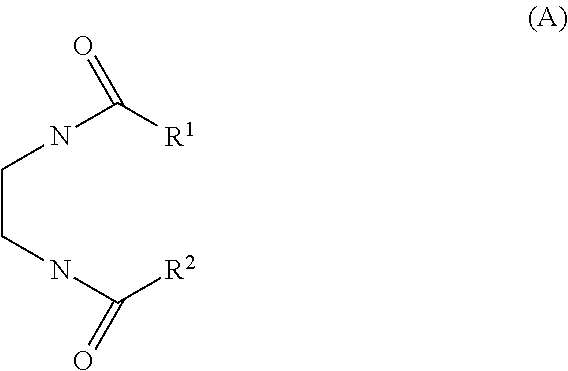Process for manufacturing asphalt
a technology for manufacturing asphalt and asphalt, applied in the direction of single unit paving, roads, roads, etc., can solve the problems of ferric sulphide being difficult to handle, hydrogen sulphide emission is a serious nuisance, and the formation of hydrogen sulphide is unwanted, so as to reduce mixing and/or compaction temperature, and reduce the amount of hydrogen sulphide
- Summary
- Abstract
- Description
- Claims
- Application Information
AI Technical Summary
Benefits of technology
Problems solved by technology
Method used
Image
Examples
example 1
[0033]Asphalt was prepared according to comparative example 2, except that 1.5 wt % of ethylene bis stearamide (EBS), based upon the combined weight of the bitumen and the sulphur pellets was incorporated into the asphalt.
example 2
[0034]Asphalt was prepared according to example 1, except that 3 wt % of ethylene bis stearamide (EBS), based upon the combined weight of the bitumen and the sulphur pellets was incorporated into the asphalt.
Temperature of Mixing and Compaction and Resulting Voids Content
[0035]The temperature of the mixing and compaction of the asphalt was varied and the voids content of the resulting asphalt was measured using the EN 12697-6 standard measurement. The results are given in Table 1:
[0036]
TABLE 1TemperatureTemperatureMean Voidsof Mixingof Compaction(%)Comparative1401305.4Example 1Comparative1401306.5Example 2aComparative1301205.5Example 2bExample 1a1301204.9Example 1b1301204.9Comparative1301107.7Example 2cExample 1c1301106.1Example 2a1301106.6Comparative1301009.1Example 2dExample 1d1301008.1Example 2b1301007.0
[0037]The compaction used for all comparative examples and examples was the same. For dense asphalt concrete, the voids content is desirably low, and a higher voids content potent...
PUM
| Property | Measurement | Unit |
|---|---|---|
| temperatures | aaaaa | aaaaa |
| softening point | aaaaa | aaaaa |
| softening point | aaaaa | aaaaa |
Abstract
Description
Claims
Application Information
 Login to View More
Login to View More - R&D
- Intellectual Property
- Life Sciences
- Materials
- Tech Scout
- Unparalleled Data Quality
- Higher Quality Content
- 60% Fewer Hallucinations
Browse by: Latest US Patents, China's latest patents, Technical Efficacy Thesaurus, Application Domain, Technology Topic, Popular Technical Reports.
© 2025 PatSnap. All rights reserved.Legal|Privacy policy|Modern Slavery Act Transparency Statement|Sitemap|About US| Contact US: help@patsnap.com



